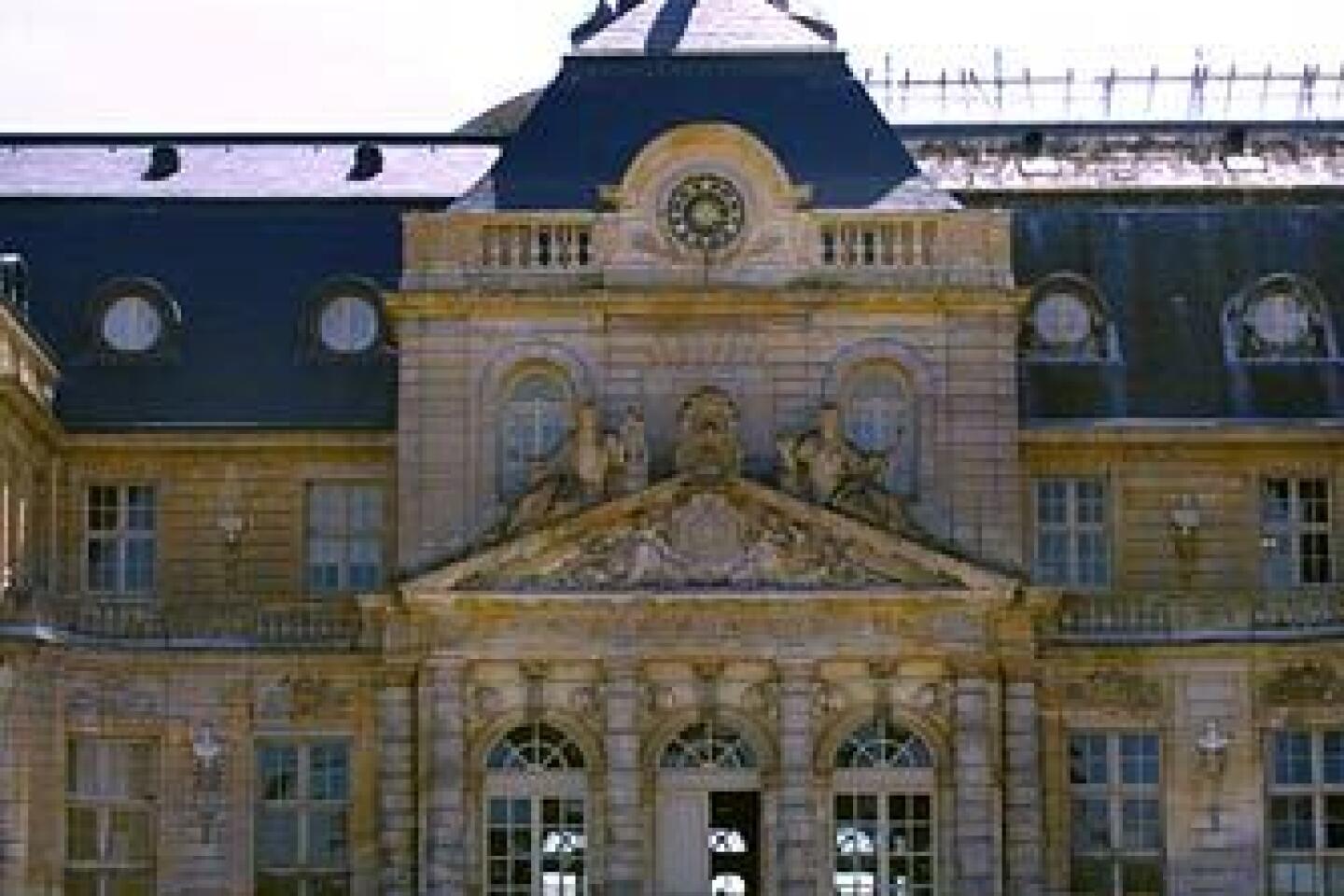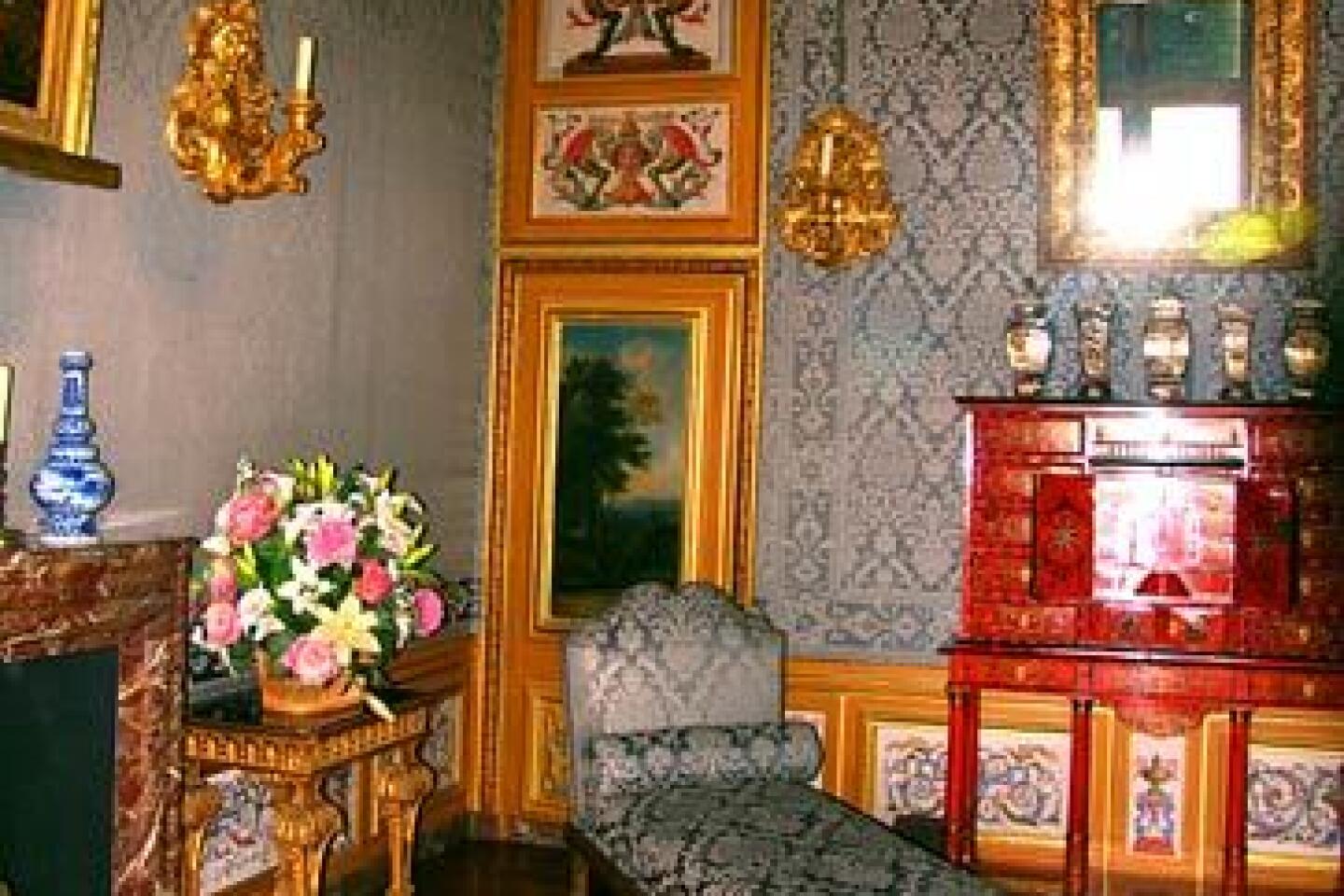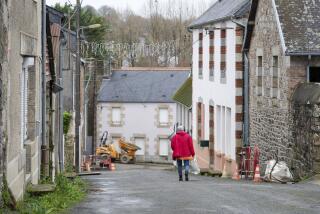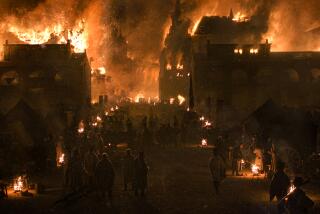France’s Vaux le Vicomte vs. Italy’s Villa Farnese
I spend a lot of time looking for a second home in Europe. You know -- the sort of place to spend lazy weekends and my golden years. A friend has a country house in Provence, and another escapes to a beautiful little apartment overlooking the Côte d’Azur.
I have narrowed it down to two properties. Neither is for sale, but that could change if the market stays soft.
I didn’t even need a real estate agent to tour them. Anyone can, because Villa Farnese at Caprarola, about 35 miles northwest of Rome, and Vaux le Vicomte, 35 miles southeast of Paris, are open to the public.
Vaux le Vicomte is near the town of Melun, which is located about 35 miles southeast of Paris, www.vaux-le-vicomte.com.
Villa Farnese is in the town of Caprarola northwest of Rome, www.caprarola.com.
It’s an easy drive from the Eternal City to Villa Farnese, which sits on a massive volcanic rock overlooking the little town of Caprarola. When I take friends there, I like to start at a gelateria in the piazza below because it’s a five-minute climb up sloping stone terraces to the distinguished double staircase at the entrance.
Villa Farnese is a state-owned museum but far enough off the beaten path to attract relatively few sightseers compared with the more famous Villa d’Este in Tivoli. Visitors are admitted in groups led by docents who usher them around without describing the villa’s features; there’s little in the way of printed information in English; and some tours don’t include the garden on the hill behind the villa with its exquisite fountains and summer house, or casino. The lack of explanation in English frustrates some.
It’s important to know a little background. Villa Farnese, for instance, was built in the second half of the 16th century -- the denouement of the Italian High Renaissance -- by Cardinal Alessandro Farnese, a grandson of Pope Paul III, who granted the young man lucrative bishoprics all over France and Italy. At the time it was common for popes to share the wealth of the throne of St. Peter’s with trusted family members, especially their nephews, or nipoti -- a practice that gave us the word “nepotism.”
A famous portrait by Titian of Pope Paul III and his grandsons Alessandro and Ottavio hangs in the Capodimonte Museum in Naples. It shows the three at the height of their glory in 1546, three years before Paul III died, a new pope was elected, power passed from the Farnese family and Alessandro decided to retire to the country.
An eminently cultivated man, Alessandro hired some of the best artists of the age to modernize the villa, including architect Giacomo Barozzi da Vignola, a former assistant to Michelangelo. Vignola’s plan, still esteemed by architectural historians, retained the building’s pentagonal shape, but gave it a circular courtyard inside surrounded by a columned loggia and five spiral staircases leading to miraculously stuccoed and frescoed galleries on the second floor.
My favorites upstairs are the Mappamondo Gallery, showing the four continents known in the 16th century (Europe, Asia, Africa and a somewhat misshapen America), and the Hall of the Feats of the Farnese with murals like a glorified family album. The frescoes, illustrating important historical events in which Farneses figured, were painted with great delicacy, fascinating detail and still-luminous color. A bridge over the moat at the back of the villa yields to the walled, lower garden, landscaped in the Italian style with clipped boxwood instead of flowers.
If you’re lucky enough to get on a tour that includes the upper garden, the docent will open a gate that leads up a steep path to a series of terraces in the woods. Each level has its own ingenious system of fountains, including one embedded in a balustrade decorated with sculpted dolphins.
The charming casino, a Villa Farnese in miniature, perches at the apex. It’s one of the official residences of the president of the Italian Republic, who ought to have his head examined if he doesn’t spend the occasional weekend there.
With a little more furniture, I could easily move into the Villa Farnese. But I can’t decide between it and Vaux le Vicomte, which is like having to choose between the Italian Renaissance and the grand French style of Louis XIV.
Like Caprarola, Vaux is appreciated chiefly by the cognoscenti who have already seen Versailles, southwest of Paris, and nearby Fontainebleau. It is smaller than the two great royal palaces, but in many ways more perfect, reached by a long, graceful allée of plane trees that is, in itself, a registered historic monument.
The château, built by French finance minister Nicholas Fouquet, so astonished Louis XIV when he saw it in 1661 that the king hired the Vaux team -- artist Charles le Brun, architect Louis le Vau and landscape designer André le Nôtre -- to redesign his palace at Versailles.
The château Le Vau designed for Fouquet sits in perfect symmetry on a terraced platform fronted by a moat. All of that was de rigueur at the time, but the architect added a high Italian-style rotunda housing an oval salon instead of a more traditional square gallery.
The grand salon looks over Le Nôtre’s magnificent garden, sweeping south across basins with fountains, gravel walkways and long parterres of boxwood clipped into arabesques that make it look like a Turkish carpet. In laying out the garden, Le Nôtre manipulated perspective so that a sunken canal at the far end of the greensward cannot be seen from the château. But for visitors who walk the full length of the garden it comes as a delightful surprise.
While the garden took shape, Le Brun, who had recently traveled in Italy, painted the muses on the ceiling of Fouquet’s private quarters in a frothy French 17th century version of Michelangelo’s Sistine Chapel. He also worked up elaborate plans for the grand salon’s décor, but as fate would have it, they were never fully executed.
Behind every great house in Europe there is generally the story of a man. At Vaux it was Fouquet, a discerning patron of the arts and friend to writers including Molière, a brilliant politician to whom almost everyone in Paris owed favors, already vastly wealthy by the time the king named him superintendent of finance. But in the course of his meteoric career, he also made dangerous enemies, such as Jean-Baptiste Colbert, who whispered stories of Fouquet’s fiscal chicanery in young Louis XIV’s ear.
Molière could not have envisioned a more dramatic fall from grace than that of Fouquet, who lavishly entertained the king at Vaux in the summer of 1661, unaware that Louis suspected him of embezzling from the state.
Less than a month later, Fouquet was arrested by Capt. Charles de Batz Castelmore, the model for Alexandre Dumas’ Comte d’Artagnan in “The Three Musketeers.”
The verdict of the long trial staged by Colbert was a foregone conclusion. Fouquet spent the rest of his life in prison, rumored to have been the subject of another Dumas novel, “The Man in the Iron Mask.” Meanwhile, Louis cleaned out Vaux, giving Fouquet’s prized possessions a new home at Versailles.
The paintings by Poussin and Gobelin tapestries that visitors see at Vaux are copies, part of restorations commissioned by Alfred Sommier, who bought Vaux in 1875. His great-grandson Patrice de Vogüé continues the effort to bring the estate back to life, refurbishing the garden, opening the tower to visitors, staging Easter egg hunts, Molière-style entertainments and chocolate soirees.
Racks of 17th century costumes hang near the entrance, which is why you still see little Fouquets on the grounds.
On my most recent trip to Vaux in May, I stood on the terrace overlooking the garden trying to decide whether to buy the château or the villa. Both will need new bathrooms, but it doesn’t matter. Money is really no object.
More to Read
Sign up for The Wild
We’ll help you find the best places to hike, bike and run, as well as the perfect silent spots for meditation and yoga.
You may occasionally receive promotional content from the Los Angeles Times.












